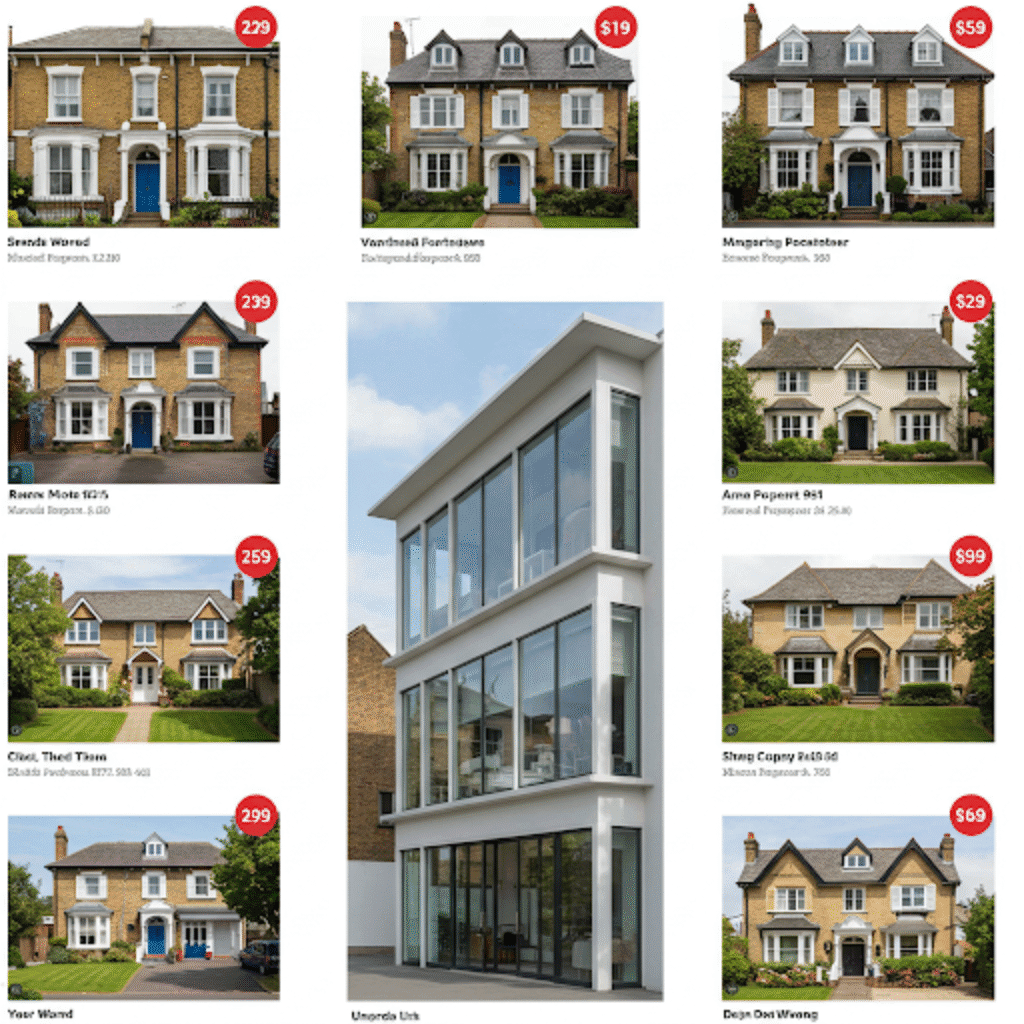
Your Comprehensive Guide to Finding Property for Sale on Rightmove UK
Embarking on the journey to find a new home in the UK is an exciting, albeit sometimes daunting, prospect. Whether you’re a first-time buyer stepping onto the ladder, a growing family looking for more space, or someone seeking a peaceful retirement retreat, the search process itself is a significant undertaking. In today’s digital age, one name dominates the landscape of UK property searching: Rightmove. It has become almost synonymous with house hunting, the virtual front door to millions of properties across England, Scotland, Wales, and Northern Ireland. But what exactly is Rightmove, and how can you leverage its power effectively to find your dream home for sale?
This guide delves deep into the world of Rightmove, offering insights, tips, and strategies to help you navigate the UK’s largest property portal like a seasoned pro. From understanding its basic functions to uncovering hidden gems and utilising its advanced features, we’ll equip you with the knowledge to make your property search smoother, smarter, and ultimately more successful.
What Exactly is Rightmove? Understanding the UK’s Property Powerhouse
It’s crucial to understand from the outset that Rightmove is not an estate agent. It doesn’t sell properties directly, nor does it employ agents to conduct viewings or negotiate offers. Instead, Rightmove operates as a vast online portal – a digital marketplace where estate agents, letting agents, and new home developers list their properties for sale and to rent. Think of it as the UK’s biggest property shop window, displaying listings from thousands of different agencies all in one convenient place.

Launched in 2000, Rightmove quickly revolutionised how people searched for homes. Before its advent, prospective buyers relied heavily on visiting individual estate agent offices, scanning local newspaper classifieds, or spotting ‘For Sale’ signs. Rightmove consolidated these efforts, bringing an unprecedented volume of listings online, accessible 24/7 from the comfort of your home. Its scale is immense; it consistently features well over a million properties at any given time, making it the first port of call for the overwhelming majority of UK house hunters.
This dominance means that if a property is being marketed by an estate agent in the UK, the chances are incredibly high that it will be listed on Rightmove. This comprehensive coverage is its greatest strength for buyers, offering the widest possible view of the current market.
Getting Started: Navigating Rightmove’s Search Functionality
The core of Rightmove’s utility lies in its powerful and user-friendly search engine. Getting started is straightforward:
- Location, Location, Location: Begin by entering the town, city, postcode, region, or even a specific station you’re interested in. Rightmove’s location search is flexible, allowing you to define your area precisely or cast a wider net. You can draw custom search areas on a map, which is incredibly useful if you’re targeting specific school catchments or want to be within a certain radius of a workplace.
- Setting Your Budget: Specify your minimum and maximum price range. Be realistic, but consider being slightly flexible – adding or subtracting £10,000-£25,000 might reveal properties you wouldn’t otherwise see, especially if there’s room for negotiation.
- Property Type and Size: Filter by the type of property you desire – detached, semi-detached, terraced, flat, bungalow, land, etc. You can also select the minimum and maximum number of bedrooms required.
- Tenure: While most searches focus on ‘For Sale’, you can specify ‘Freehold’ or ‘Leasehold’ if this is a critical factor from the outset, although details are usually within the listing itself.
- Added Filters for Precision: This is where you can really refine your search. Rightmove offers numerous filters:
- Must Haves: Tick boxes for essential features like ‘Garden’ or ‘Parking’.
- Property Status: Choose to include or exclude properties ‘Under Offer’ or ‘Sold Subject to Contract’ (SSTC). While viewing these can give market insights, hiding them focuses your search on available stock.
- Listing Date: Filter by when the property was added (e.g., ‘Last 24 hours’, ‘Last 3 days’, ‘Last 7 days’, ‘Last 14 days’). This is vital for staying ahead in fast-moving markets.
- Keywords: A powerful tool! If you need specific features not covered by standard filters (e.g., ‘annexe’, ‘conservatory’, ‘garage’, ‘period features’, ‘sea view’, ‘fixer upper’), add them here. Be mindful of variations in how agents describe properties.
- Special Categories: Filter for ‘New Homes’, ‘Retirement Homes’, or ‘Auctions’.
Experimenting with these filters is key. Start broad, then gradually narrow your criteria based on the results you see and your evolving priorities.
Decoding a Rightmove Listing: More Than Just Photos
Once your search results appear, clicking on a property opens a detailed listing page. Understanding the information presented here is vital:
- Photos: Usually the first thing you’ll look at. Agents aim to showcase the property’s best features. Look critically – are rooms shown from multiple angles? Are any key areas (like bathrooms or kitchens) missing photos? Remember, photos are designed to entice; viewings are essential.
- Floor Plans: Invaluable for understanding the layout, room dimensions, and flow of the property. They provide a sense of scale that photos alone cannot convey. Check for total square footage/metres if provided.
- Property Description: Written by the estate agent. Read carefully for key details, but also learn to read between the lines. Phrases like “requires modernisation” or “potential to extend” indicate work is needed. Note mentions of local amenities, transport links, and unique selling points.
- Map View: Crucial for context. Explore the immediate surroundings using the standard map, satellite view, and Google Street View. Check proximity to roads, railways, shops, parks, and schools. Rightmove often overlays transport links and school information directly onto the map.
- School Checker: Many listings include integrated tools showing nearby schools and potentially their Ofsted ratings. Always double-check catchment areas directly with the local authority, as boundaries can change.
- Broadband Speed Check: Increasingly important, this tool gives an indication of the internet connectivity available at the property.
- Energy Performance Certificate (EPC): Legally required, the EPC chart shows the property’s current and potential energy efficiency rating (A being most efficient, G least). It also suggests ways to improve efficiency. This gives an idea of potential running costs.
- Sold Prices Nearby: Rightmove often includes a tool showing prices achieved for similar properties sold recently in the local area. This is excellent for gauging market value and understanding pricing trends.
- Estate Agent Details: Clearly displayed, allowing you to request more information or book a viewing via phone or an online form.
- Virtual Tours/Video Tours: Increasingly common, especially since 2020. These offer a more immersive look at the property before committing to an in-person viewing.
Pro Tips for Maximising Your Rightmove Search
Simply running searches isn’t enough; strategic use of Rightmove can significantly improve your chances of finding the right property:
- Set Up Instant Alerts: Don’t rely on manually checking every day. Create saved searches for your key criteria and enable instant email alerts. As soon as a property matching your needs is listed, you’ll be notified, allowing you to act quickly – essential in competitive markets.
- Use the Rightmove App: The mobile app is excellent for searching on the go, receiving alerts, and quickly contacting agents. You can save properties and sync them across devices.
- Save Promising Properties: Use the ‘Save Property’ feature. This creates a shortlist you can easily review and monitor for status changes (e.g., price reductions, going under offer).
- Look Beyond the First Page: Don’t just focus on the newest listings. Sometimes properties linger because of poor photos or descriptions, or minor issues that might be acceptable to you. Dig deeper.
- Understand Listing Statuses: ‘For Sale’ means it’s available. ‘Under Offer’ means an offer has been accepted, but contracts haven’t exchanged (the sale can still fall through). ‘Sold STC’ (Sold Subject to Contract) is similar to ‘Under Offer’. Knowing these helps manage expectations.
- Analyse Sold Price Data: Regularly check the ‘Sold Prices’ section (accessible from the main menu) for your target areas. This builds your understanding of true market value, separate from asking prices.
- Be Critical of Photos and Descriptions: Wide-angle lenses can make rooms look bigger. Clutter might be hiding issues. Vague descriptions could mean problems. Use listings as a starting point, not the final word.
- Don’t Discount Auctions (Carefully): Auction properties often require significant work or have legal complexities (e.g., short leases), but can sometimes offer value. Understand the auction process thoroughly before considering this route.
- Check How Long a Property Has Been Listed: If a property has been on Rightmove for many months without selling or reducing its price, ask yourself (and the agent) why. Is it overpriced? Are there underlying issues?
The Role of Estate Agents and the Next Steps
Remember, Rightmove is the intermediary. When you find a property you like, your interaction shifts to the listing estate agent. Use the contact details on Rightmove to:
- Request Further Information: Ask specific questions not covered in the listing (e.g., lease length details, service charges, chain situation).
- Arrange a Viewing: This is non-negotiable. You must visit a property in person (ideally multiple times) before making any decisions.
The agent represents the seller, but they are your point of contact for accessing the property and submitting offers. Building a good rapport with local agents active in your desired area can also be beneficial; sometimes they know about properties before they even hit Rightmove.
Rightmove’s Market Insights: Beyond Individual Listings
Rightmove isn’t just a tool for finding individual homes; it’s also a significant source of UK property market data. They regularly publish:
- The Rightmove House Price Index: A closely watched monthly report detailing asking price trends across the UK, broken down by region and property type.
- Market Trend Reports: Analysis of supply, demand, time-to-sell, and rental market trends.
Keeping an eye on these reports can provide valuable context for your own search, helping you understand whether the market is hot or cold, which areas are seeing price growth, and general buyer/seller sentiment.
Rightmove: An Essential Tool, Not the Only Tool
While Rightmove is undeniably powerful and central to most UK property searches, it’s important to remember it’s one part of a larger process. Finding the listing is just the beginning. You’ll still need:
- In-person viewings: To assess the property’s true condition, atmosphere, and suitability.
- Mortgage advice: To secure financing (get an Agreement in Principle early).
- A solicitor/conveyancer: To handle the legal aspects of the purchase.
- A surveyor: To conduct a survey (e.g., RICS HomeBuyer Report or Building Survey) to identify potential structural issues or defects.
- Local knowledge: Drive or walk around potential neighbourhoods at different times of day to get a feel for the area.
Conclusion: Mastering Rightmove for Your UK Home Search
Rightmove has fundamentally changed the way people find homes for sale in the UK. Its comprehensive listings, powerful search tools, and wealth of integrated data make it an indispensable resource for any prospective buyer. By understanding how it works, utilising its features effectively, setting up alerts, and critically evaluating the information presented, you can transform your property search from a potentially overwhelming task into a targeted and efficient process.
Treat Rightmove as your primary research tool, your digital window into the market. Combine its power with diligent real-world investigation – viewings, local exploration, professional advice – and you’ll be well on your way to navigating the complexities of the UK property market and, ultimately, finding a place to call home. Happy house hunting!







